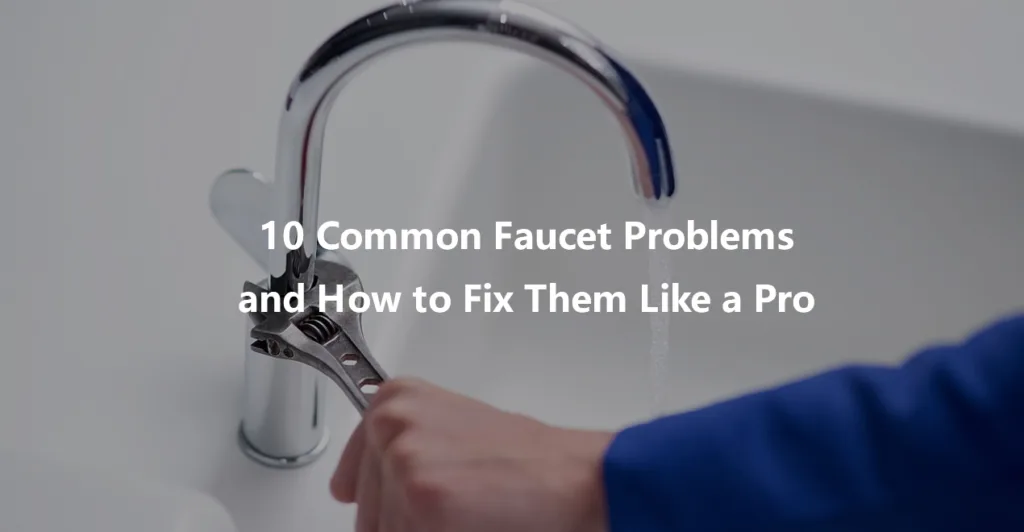10 Common Faucet Problems and How to Fix Them Like a Pro
Faucets are essential fixtures in every household, but like all mechanical systems, they can experience issues over time. Understanding common faucet problems and knowing how to fix them can save you time, money, and the inconvenience of waiting for a plumber. Here, we’ll explore the 10 most common faucet problems and provide step-by-step solutions to fix them like a pro.
1. Dripping Faucet
Problem: A dripping faucet is one of the most common and annoying issues. It often occurs due to a worn-out washer or O-ring.
Fix:
- Turn off the water supply under the sink.
- Use a wrench to disassemble the faucet and inspect the washer or O-ring.
- Replace the damaged part with a new one.
- Reassemble the faucet and turn the water back on.
Pro Tip: Use Teflon tape on threads to prevent leaks after reassembly.
2. Low Water Pressure
Problem: Reduced water pressure is often caused by a clogged aerator or mineral buildup in the faucet.
Fix:
- Unscrew the aerator from the faucet.
- Soak it in a solution of vinegar and water for an hour to dissolve mineral deposits.
- Rinse and reinstall the aerator.
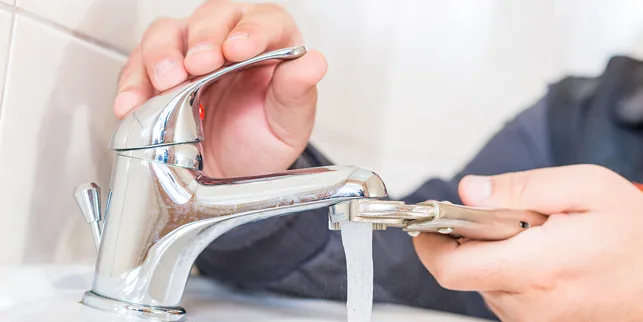
Pro Tip: Regularly clean aerators, especially in hard water areas, to prevent buildup.
3. Faucet Handle Leaks
Problem: Water leaking around the handle typically results from a damaged cartridge or worn-out seals.
Fix:
- Shut off the water supply and remove the handle.
- Inspect the cartridge or seals for damage.
- Replace the faulty parts with manufacturer-approved replacements.
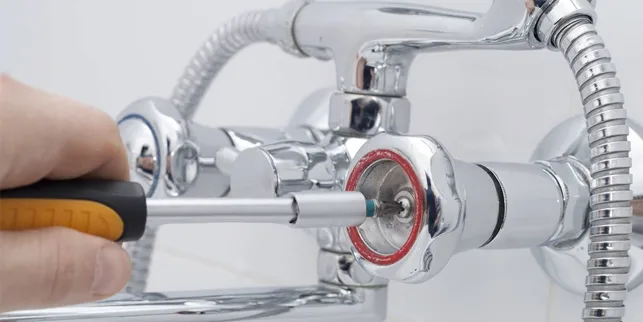
Pro Tip: Ensure you have the correct replacement cartridge for your faucet model.
4. Noisy Faucet
Problem: A squealing or hammering noise when you turn on the faucet can be due to loose parts or high water pressure.
Fix:
- Tighten any loose components in the faucet assembly.
- If the noise persists, check the water pressure and adjust the pressure regulator if needed.
Pro Tip: Install a water hammer arrestor to prevent pipe vibrations.
5. Faucet Won’t Shut Off Completely
Problem: This issue is often caused by a damaged valve seat or washer.
Fix:
- Turn off the water supply and disassemble the faucet.
- Inspect and clean the valve seat. If damaged, replace it.
- Replace the washer if it’s worn out.
Pro Tip: Use a valve seat wrench for easy removal and replacement.
6. Rust or Corrosion
Problem: Rust and corrosion can develop due to prolonged exposure to moisture and minerals.
Fix:
- Clean the affected area with a mixture of vinegar and baking soda.
- For severe corrosion, consider replacing the faucet with a rust-resistant model, such as stainless steel.
Pro Tip: Always dry your faucet after cleaning to prevent moisture buildup.
7. Loose Faucet Base
Problem: Over time, the base of the faucet can loosen, causing wobbling or leaks.
Fix:
- Turn off the water supply and remove the faucet handle.
- Tighten the mounting nut under the sink using a basin wrench.
- Reassemble the faucet.
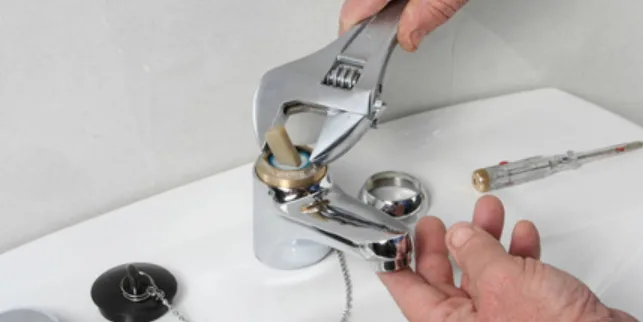
Pro Tip: Apply plumber’s putty around the base before tightening to ensure a watertight seal.
8. Discolored Water
Problem: Discolored water often indicates corrosion inside the faucet or pipes.
Fix:
- Flush the faucet by running water for a few minutes.
- If the issue persists, replace the faucet or consult a plumber to inspect the pipes.
Pro Tip: Install a water filtration system to prevent discoloration caused by rust or sediment.
9. Faucet Sprayer Problems
Problem: Kitchen faucet sprayers can become clogged or fail to spray evenly.
Fix:
- Remove the sprayer head and soak it in a vinegar solution to dissolve clogs.
- If the sprayer hose is damaged, replace it with a new one.
Pro Tip: Regularly check sprayer hoses for leaks or cracks.
10. Faulty Faucet Installation
Problem: Incorrect installation can lead to leaks, low pressure, or improper alignment.
Fix:
- Refer to the manufacturer’s installation guide for proper setup.
- Ensure all connections are secure and sealed.
- Use plumber’s putty or silicone sealant for added protection against leaks.
Pro Tip: If you’re unsure, consult a professional plumber to avoid costly mistakes.
Preventing Faucet Problems
While it’s helpful to know how to fix common faucet issues, prevention is always better than repair. Here are some maintenance tips to keep your faucets in top condition:
- Regular Cleaning: Clean your faucets and aerators monthly to prevent mineral buildup.
- Use Quality Fixtures: Invest in high-quality faucets made from durable materials like stainless steel or brass.
- Inspect Regularly: Check for leaks, loose parts, or corrosion and address them promptly.
- Water Softener: Install a water softener to reduce mineral deposits in hard water areas.
When to Call a Professional
While many faucet issues can be fixed with basic tools and knowledge, some problems require professional assistance. Call a plumber if:
- The issue persists after DIY fixes.
- There’s severe corrosion or damage to pipes.
- You’re unsure how to disassemble or reassemble the faucet.
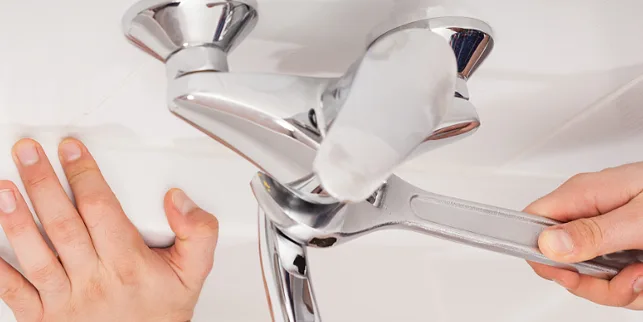
Conclusion
Faucet problems are a common household challenge, but with the right tools and knowledge, you can fix most issues like a pro. By addressing these problems promptly and maintaining your faucets regularly, you can extend their lifespan and ensure optimal performance.
Remember, the key to a hassle-free faucet experience is a combination of quality fixtures and proactive care. So, whether you’re dealing with a dripping faucet or planning a new installation, you’re now equipped to handle it all!
If you have any questions,pls click on:https://infaucets.com

